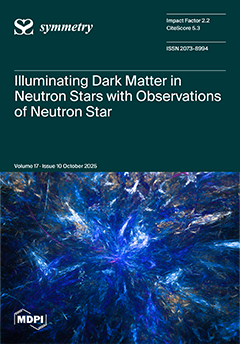It is very important to create mathematical models for real world problems and to propose new solution methods. Today, symmetry groups and algebras are very popular in mathematical physics as well as in many fields from engineering to economics to solve mathematical models. This paper introduces a novel methodological framework based on the
SO(3) Lie method to estimate time-dependent correlation matrices (correlation flows) among three variables that have chaotic, entropy, and fractal characteristics, from 11 April 2011 to 31 December 2024 for daily data; from 10 April 2011 to 29 December 2024 for weekly data; and from April 2011 to December 2024 for monthly data. So, it develops the stochastic
SO(2) Lie method into the
SO(3) Lie method that aims to obtain the correlation flow for three variables with chaotic, entropy, and fractal structure. The results were obtained at three stages. Firstly, we applied entropy (Shannon, Rényi, Tsallis, Higuchi) measures, Kolmogorov–Sinai complexity, Hurst exponents, rescaled range tests, and Lyapunov exponent methods. The results of the Lyapunov exponents (Wolf, Rosenstein’s Method, Kantz’s Method) and entropy methods, and KSC found evidence of chaos, entropy, and complexity. Secondly, the stochastic differential equations which depend on S
2 (
SO(3) Lie group) and Lie algebra to obtain the correlation flows are explained. The resulting equation was numerically solved. The correlation flows were obtained by using the defined covariance flow transformation. Finally, we ran the robustness check. Accordingly, our robustness check results showed the
SO(3) Lie method produced more effective results than the standard and Spearman correlation and covariance matrix. And, this method found lower RMSE and MAPE values, greater stability, and better forecast accuracy. For daily data, the Lie method found RMSE = 0.63, MAE = 0.43, and MAPE = 5.04, RMSE = 0.78, MAE = 0.56, and MAPE = 70.28 for weekly data, and RMSE = 0.081, MAE = 0.06, and MAPE = 7.39 for monthly data. These findings indicate that the
SO(3) framework provides greater robustness, lower errors, and improved forecasting performance, as well as higher sensitivity to nonlinear transitions compared to standard correlation measures. By embedding time-dependent correlation matrix into a Lie group framework inspired by physics, this paper highlights the deep structural parallels between financial markets and complex physical systems.
Full article





